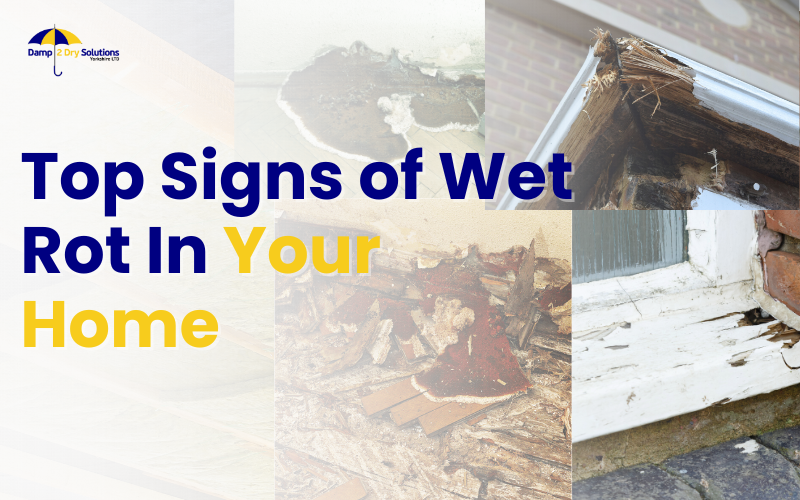Homeowners, meet dry rot! We know it’s never a pleasant surprise to have your precious home space invaded by aggressive fungal growth, but it does happen sometimes. If you suspect you might have a dry rot outbreak, we’ve put together a guide to help you identify even the early signs.
How to identify Dry Rot?
Dry rot or Serpula Iacymans is a brown-beige fungus that enjoys feeding off timber, specifically the cellulose part of the timber. In this process, the wooden structures are left brittle and dry looking, filled with cracks and giving off a musty, damp smell. Some experts are brave enough to call this nasty fungus… pizza-like, but if you reach that point, you’re probably in dire need of an intervention.
No wooden structure is safe, as the dry rot can eat away at floorboards, joists or skirtings. It can slip into non-accessible spots in your home, such as the attic or the cupboard under the stairs.
How does it spread?
Dry rot is a living organism; to survive, it has to feed. Therefore, it actively seeks new food sources and mediums to support its growth.
The first sign of spreading dry rot is Mycelium Growth. That looks like a fluffy cotton-like substance that layers the surface of wood or other surfaces and prepares it for new growth.
The second stage is a more obvious one: the sporophore or the fruiting body. The red-rusty colour and pizza-like aspect can quickly identify the spores of the fungus. The sporophore can have different shapes and sizes depending on the stage and condition. Still, the very distinct colouring gives it away.
The last stage happens when the wood surface has already been affected or partially destroyed by the fungus, leaving the area dry and brittle and emitting a damp, fungal smell.
Unlike its close relative, the wet rot, which is mainly confined to the bounds of its moisture source, dry rot is more ruthless, spreads more easily to other mediums and materials, and is dependent only on the mycelium growth to migrate.
What to do next?
Suppose you suspect any area of your house to be affected by dry rot. If there’s a foul, damp smell around, or if you see any fungal growth, you should take care of it as soon as possible. The more the fungus spreads, the more it can damage critical surfaces rapidly.
You can request a dry rot survey that will help you assess the damage and provide a plan to stop the fungal spread and get more extensive damage.
The sooner you identify the dry rot, the better! For your home and wallet as well! You can book a survey with one of our specialists to inspect your property for damage, repair or remove the timber affected by dry rot, and eliminate the issue.






